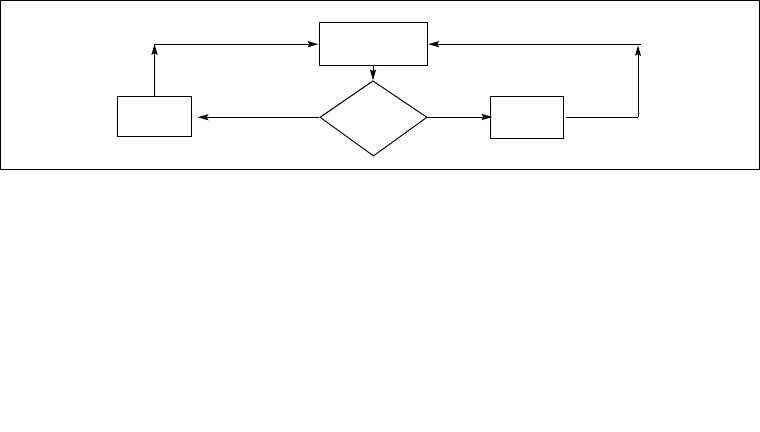
10-54 Vol. 3
ADVANCED PROGRAMMABLE INTERRUPT CONTROLLER (APIC)
priorities of the local APICs by resetting Arb ID register of each agent to its current
APIC ID value. (The Pentium 4 and Intel Xeon processors do not implement the Arb
ID register.)
Section 10.11, “APIC Bus Message Passing Mechanism and Protocol (P6 Family,
Pentium Processors),” describes the APIC bus arbitration protocols and bus message
formats, while Section 10.7.1, “Interrupt Command Register (ICR),” describes the
INIT level de-assert IPI message.
Note that except for the SIPI IPI (see Section 10.7.1, “Interrupt Command Register
(ICR)”), all bus messages that fail to be delivered to their specified destination or
destinations are automatically retried. Software should avoid situations in which IPIs
are sent to disabled or nonexistent local APICs, causing the messages to be resent
repeatedly.
10.9 HANDLING INTERRUPTS
When a local APIC receives an interrupt from a local source, an interrupt message
from an I/O APIC, or and IPI, the manner in which it handles the message depends
on processor implementation, as described in the following sections.
10.9.1 Interrupt Handling with the Pentium 4 and Intel Xeon
Processors
With the Pentium 4 and Intel Xeon processors, the local APIC handles the local inter-
rupts, interrupt messages, and IPIs it receives as follows:
1. It determines if it is the specified destination or not (see Figure 10-24). If it is the
specified destination, it accepts the message; if it is not, it discards the message.
2. If the local APIC determines that it is the designated destination for the interrupt
and if the interrupt request is an NMI, SMI, INIT, ExtINT, or SIPI, the interrupt is
sent directly to the processor core for handling.
Figure 10-24. Interrupt Acceptance Flow Chart for the Local APIC (Pentium 4 and
Intel Xeon Processors)
Wait to Receive
Bus Message
Belong to
Destination?
Discard
Message
No
Accept
Message
Yes


















